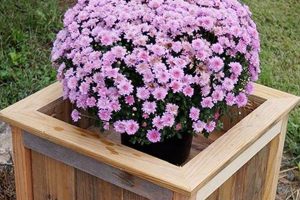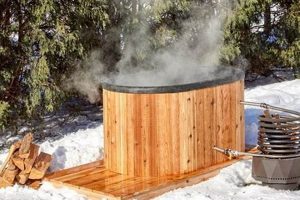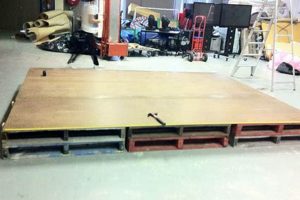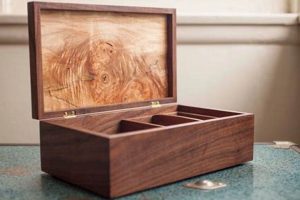The construction of shelving units from timber materials, undertaken as a do-it-yourself project, represents a common approach to home organization and interior design. This activity typically involves selecting lumber, cutting it to specified dimensions, assembling the components, and applying finishes as desired. Examples range from simple floating shelves to more complex, multi-tiered storage systems constructed in a personal workshop or home environment.
This form of self-sufficient construction offers multiple advantages. It allows for customization of dimensions and aesthetics to precisely match existing spaces and dcor. Furthermore, it can represent a cost-effective alternative to purchasing pre-fabricated furniture, particularly when utilizing reclaimed or recycled materials. Historically, self-made shelving has been a practical solution for storage needs, predating the mass production and widespread availability of commercial furniture options.
The subsequent sections will delve into various aspects of constructing customized storage solutions, including material selection, essential tools, step-by-step assembly guides, and finishing techniques to ensure durability and visual appeal.
Essential Considerations for Timber-Based Shelving Projects
The following guidelines offer practical advice for individuals engaging in the construction of shelving units from lumber materials. Adherence to these recommendations can improve the quality, durability, and aesthetic appeal of the finished product.
Tip 1: Lumber Selection: Prioritize the use of kiln-dried lumber to minimize warping and cracking post-construction. Consider the load-bearing requirements of the shelf when selecting wood species; hardwoods such as oak or maple offer superior strength compared to softwoods like pine.
Tip 2: Accurate Measurement and Cutting: Precise measurements are crucial for achieving a professional-looking result. Employ a high-quality measuring tape and a speed square to ensure accurate cuts. A miter saw is recommended for achieving precise angles and consistent lengths.
Tip 3: Secure Fastening Techniques: Use appropriate fasteners based on the type of wood and the anticipated load. Screws generally provide a more secure hold than nails. Pre-drilling pilot holes can prevent wood splitting, particularly when working with hardwoods.
Tip 4: Surface Preparation: Thoroughly sand all wood surfaces with progressively finer grits of sandpaper (e.g., 120, 180, 220) to create a smooth, even surface for finishing. Remove all sanding dust prior to applying any stain or sealant.
Tip 5: Appropriate Finishing: Select a finish that provides adequate protection against moisture and wear. Oil-based finishes offer greater durability than water-based finishes. Apply multiple thin coats, allowing each coat to dry completely before applying the next.
Tip 6: Wall Mounting Considerations: When installing shelves, locate wall studs for maximum support. Use a stud finder to accurately identify stud locations. For installations where studs are not accessible, utilize appropriate wall anchors designed to support the weight of the shelf and its contents.
Tip 7: Weight Distribution: Distribute weight evenly across the shelf to prevent sagging or failure. Avoid concentrating heavy items in the center of the shelf.
Adhering to these points enhances the structural integrity and aesthetic appeal of the crafted storage solutions. These practices can elevate the quality of any self-led construction project to a professional level.
The subsequent section will address common challenges encountered during assembly and provide troubleshooting guidance.
1. Material selection
The selection of appropriate lumber for self-constructed shelving units is a pivotal decision that directly impacts the final product’s structural integrity, aesthetic appeal, and longevity. The material chosen serves as the foundational element, dictating the shelf’s ability to withstand weight, resist environmental factors, and complement the surrounding decor. An ill-considered selection can lead to premature failure, aesthetic incompatibility, or increased project costs in the long term.
Consider, for example, a situation where inexpensive, untreated pine is used for a bookshelf intended to house heavy volumes. The softwood’s inherent lack of density may result in sagging or bowing over time, ultimately compromising the structure. Conversely, utilizing a more robust hardwood like oak or maple provides the necessary strength and stability to support substantial weight. Similarly, in environments prone to high humidity, employing naturally water-resistant species such as cedar or teak, or treating lumber with a sealant, becomes crucial to prevent warping and fungal growth. Real-world projects are testaments to the importance of material selection; a kitchen shelf built from reclaimed barn wood offers a rustic charm, while a minimalist floating shelf crafted from finished plywood provides a sleek, modern look.
In summation, informed decision-making regarding material selection is crucial for the successful completion of self-led shelving projects. Careful consideration of wood species, moisture resistance, and aesthetic suitability leads to a finished product that is both functional and visually pleasing. Neglecting this crucial phase leads to compromised shelving units that do not meet practical or aesthetic needs, proving the intrinsic link between “Material selection” and the overall success of construction project.
2. Accurate dimensions
Accurate dimensions form a critical foundation for successful construction of shelving units. Precise measurements, cutting, and assembly dictate the structural integrity and visual harmony of the finished product. A discrepancy in dimensions, even a seemingly minor one, can propagate throughout the project, leading to misaligned joints, instability, and an overall unprofessional appearance. The relationship is one of direct cause and effect; inaccuracies in initial measurements will invariably result in downstream problems during assembly and installation.
As a practical example, consider a scenario where shelf boards are cut to slightly different lengths. This dimensional variation will prevent the creation of flush joints, necessitating remedial actions such as sanding or shimming, which may compromise the structural integrity of the shelf. Furthermore, when installing multiple shelves within a cabinet or alcove, dimensional inconsistencies will result in uneven spacing and a visually jarring appearance. Precise planning and dimensional adherence avoid these issues, resulting in a final piece that is secure, stable, and visually appealing. Experienced woodworkers understand the need for verification of each measurement throughout the project’s life, and that even small deviations can require complete component replacement. This accuracy is a cornerstone of the construction process, directly impacting the shelf’s usefulness and longevity.
In conclusion, the connection between accurate dimensions and successful implementation of shelving projects is undeniable. Adherence to precise measurements ensures structural soundness, aesthetic quality, and overall functionality. The incorporation of accurate dimensions, therefore, constitutes an essential element of planning and execution, minimizing the risk of errors and ensuring a satisfying result. Addressing this facet of the project requires time and resources, but is always a positive return on investment.
3. Secure assembly
Secure assembly is paramount in the construction of shelving units, directly influencing load-bearing capacity, stability, and longevity. Faulty assembly techniques compromise the structural integrity of the finished product, potentially leading to collapse and rendering the unit unsafe. Attention to detail and adherence to established practices are crucial.
- Joint Strength and Integrity
The strength of assembled joints is directly proportional to the overall stability of the shelf. Using appropriate joinery techniques, such as mortise and tenon, dovetails, or robust screw connections reinforced with wood glue, ensures joints can withstand anticipated loads. A bookshelf assembled with weak joints is prone to racking and eventual failure, while correctly joined shelves maintain their shape and load-bearing capacity.
- Fastener Selection and Application
Selecting the correct fasteners for the wood type and anticipated load is essential. Screws offer superior holding power compared to nails, especially in hardwoods. Pre-drilling pilot holes prevents wood splitting, ensuring a secure connection. Incorrect fastener choice leads to joint weakness, while properly selected and installed fasteners provide a strong and durable assembly.
- Alignment and Squareness
Maintaining alignment and squareness throughout the assembly process is critical for stability and aesthetics. Using clamps and measuring diagonals ensures the shelf remains square during glue-up and fastening. Misaligned shelves are unstable and visually unappealing, while properly aligned shelves distribute weight evenly and present a professional appearance.
- Glue Application Techniques
Wood glue provides a significant increase in joint strength. Applying glue evenly to all mating surfaces and clamping firmly ensures a strong bond. Insufficient glue or inadequate clamping reduces joint strength, while proper glue application maximizes the adhesive bond and structural integrity.
These facets underscore the importance of secure assembly techniques in the crafting of shelves. Whether constructing basic utility shelves or elaborate display units, adhering to these principles ensures the final product is both functional and durable. Lack of attention to detail in assembly negates the benefits of carefully selected materials and precise dimensioning, proving the integral role secure assembly plays in shelf construction.
4. Protective finishing
The application of a protective finish is an indispensable step in the crafting of shelving units from lumber materials. This process extends beyond mere aesthetic enhancement; it serves as a critical defense against environmental factors that degrade the underlying wood. The absence of a suitable finish leaves the timber vulnerable to moisture absorption, UV damage, scratching, and the ingress of pests, significantly reducing its lifespan and functional utility. The protective layer acts as a barrier, mitigating these risks and preserving the structural integrity and appearance of the shelving unit.
Specific finishing choices depend on the intended use and environment. For shelving in humid locations, such as bathrooms or kitchens, moisture-resistant finishes like polyurethane or epoxy resin are essential. These coatings create a waterproof seal, preventing warping, rot, and the growth of mold. Shelves exposed to direct sunlight require UV-resistant finishes to prevent fading and discoloration. In high-traffic areas, durable finishes like lacquer or varnish offer scratch resistance, preserving the surface appearance over time. A shelving unit without these protective measures is subject to accelerated deterioration, undermining its structural stability and aesthetic appeal, irrespective of careful material selection and precise assembly. A concrete example would be wooden shelves in a garage; absent a protective finish, they will absorb moisture and succumb to mold and rot due to the damp environment and potential chemical spills.
In summary, protective finishing is intrinsically linked to the long-term success of shelf construction projects. Selecting and applying an appropriate finish extends shelf life, preserves appearance, and provides resistance to environmental stresses. This proactive approach ensures the initial investment of materials and labor yields lasting value and avoids the costly consequences of neglect, integrating the shelf construction process and outcome.
5. Stable mounting
Stable mounting constitutes a fundamental aspect of any self-executed shelving project. It directly dictates the load-bearing capacity, safety, and longevity of the installed unit. Improper mounting techniques create a significant risk of shelf collapse, potentially causing damage to property and, more importantly, physical injury. The efficacy of lumber selection, precise dimensioning, and secure assembly is rendered inconsequential if the final installation lacks adequate support and structural integrity. The connection is causal: unstable mounting negates the benefits of proper construction techniques, leading to a dysfunctional and hazardous outcome.
Consider, for example, installing a bookshelf constructed from solid oak without properly locating and securing it to wall studs. While the lumber and joinery may be robust, the shelf’s reliance on drywall anchors alone will likely result in failure under significant weight. Similarly, floating shelves, prized for their minimalist aesthetic, demand meticulous attention to mounting hardware and wall construction to ensure they can bear the intended load without sagging or detaching. Practical application dictates the use of stud finders to locate secure attachment points, appropriate anchors for varying wall types, and precise leveling to distribute weight evenly. Ignoring these factors introduces a vulnerability that undermines the entire endeavor.
In summation, stable mounting is not merely an ancillary consideration but an integral component of all self-led shelving projects. It translates careful planning and construction into a functional and secure addition to the living space. A thorough understanding of wall construction, load-bearing principles, and appropriate hardware is essential to mitigate the risks associated with improper installation and ensure the shelving unit performs its intended function safely and reliably. The ability to correctly implement secure mounting practices is vital for any successful construction process.
Frequently Asked Questions About DIY Timber Shelving
The subsequent questions and answers address common inquiries and concerns pertaining to the construction and installation of shelving units from wood, undertaken as a self-managed project. The intent is to provide clear, concise guidance for individuals embarking on such endeavors.
Question 1: What are the fundamental tools required for building timber shelves?
Essential tools include a measuring tape, saw (circular, miter, or hand saw), drill with various bits, level, sandpaper, safety glasses, and a dust mask. Clamps are also highly recommended for securing components during assembly.
Question 2: How does lumber selection impact the stability of timber shelves?
Lumber selection is critical. Hardwoods like oak or maple offer superior strength for heavy loads. Softwoods like pine are suitable for lighter items. Kiln-dried lumber minimizes warping and cracking. The chosen wood species directly influences the load-bearing capacity and longevity of the shelving unit.
Question 3: What safety precautions should be observed during shelf construction?
Eye protection (safety glasses) is mandatory when cutting or sanding wood. A dust mask prevents inhalation of airborne particles. Ensure adequate ventilation when applying finishes. Use caution when operating power tools, adhering to manufacturer instructions. Secure the work area to prevent accidents.
Question 4: What are the key considerations for mounting timber shelves to a wall?
Locate wall studs for maximum support. Use a stud finder to accurately identify their positions. For installations where studs are inaccessible, utilize appropriate wall anchors designed to support the anticipated weight. Ensure the shelves are level during installation.
Question 5: How should a finish be selected and applied to shelving projects?
Select a finish that provides adequate protection against moisture and wear. Oil-based finishes offer greater durability than water-based finishes. Apply multiple thin coats, allowing each coat to dry completely before applying the next. Sand lightly between coats for a smooth surface.
Question 6: What constitutes proper maintenance for timber shelves to ensure longevity?
Regularly dust the shelves to prevent accumulation of particles. Avoid placing excessive weight on the shelves. Periodically inspect the shelves for signs of damage, such as warping, cracking, or loose joints. Address any issues promptly to prevent further deterioration.
These frequently asked questions aim to provide a foundational understanding of the key elements involved in creating shelving units from timber. Adhering to these principles promotes successful project completion and long-term durability.
The concluding section will explore advanced techniques and design considerations for more complex shelving projects.
Conclusion
This exploration of wooden shelf diy underscores its multifaceted nature. From material selection and accurate dimensioning to secure assembly, protective finishing, and stable mounting, each stage demands meticulous attention. Successfully implementing a wooden shelf diy project requires a synthesis of practical skills, informed decision-making, and a commitment to safety protocols. The absence of any one of these elements risks compromising the structural integrity, aesthetic appeal, and longevity of the finished product.
The enduring appeal of wooden shelf diy lies in its capacity to blend functionality with personalized design. Whether addressing storage needs or enhancing interior aesthetics, this endeavor offers a tangible outlet for creativity and resourcefulness. Continued exploration of advanced techniques and innovative designs promises to further elevate the potential of wooden shelf diy, transforming it from a mere construction task into a sophisticated form of self-expression and practical problem-solving.





![[DIY Guide] Easy DIY Wood Window Shutters You Can Build! The DIY Hub: Creative Crafts, Repairs & Life Hacks [DIY Guide] Easy DIY Wood Window Shutters You Can Build! | The DIY Hub: Creative Crafts, Repairs & Life Hacks](https://craftingdiycenter.com/wp-content/uploads/2025/07/th-3579-300x200.jpg)

